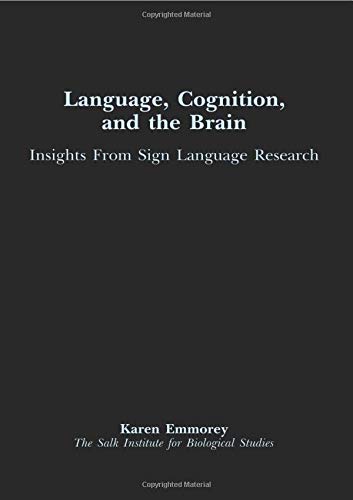Once signed languages are recognized as natural human languages, a world of exploration opens up. Signed languages provide a powerful tool for investigating the nature of human language and language processing, the relation between cognition and language, and the neural organization of language. The value of sign languages lies in their modality. Specifically, for perception, signed languages depend upon high-level vision and motion processing systems, and for production, they require the integration of motor systems involving the hands and face. These facts raise many questions: What impact does this different biological base have for grammatical systems? For online language processing? For the acquisition of language? How does it affect nonlinguistic cognitive structures and processing? Are the same neural systems involved? These are some of the questions that this book aims at addressing. The answers provide insight into what constrains grammatical form, language processing, linguistic working memory, and hemispheric specialization for language. The study of signed languages allows researchers to address questions about the nature of linguistic and cognitive systems that otherwise could not be easily addressed.
Additional ISBNs
9780805833980, 9780805833997, 0805833986, 0805833994
Language, Cognition, and the Brain Ebook
Insights From Sign Language Research
By: Karen Emmorey
Publisher:
Psychology Press
Print ISBN: 9780805833997, 0805833994
eText ISBN: 9781135664800, 1135664803
Edition: 1st
Pages: 408
Copyright year: 2001
Format: EPUB
Available from $ 30.78 USD
SKU: 9781135664800R90
? Downloaded copy on your device does not expire.











